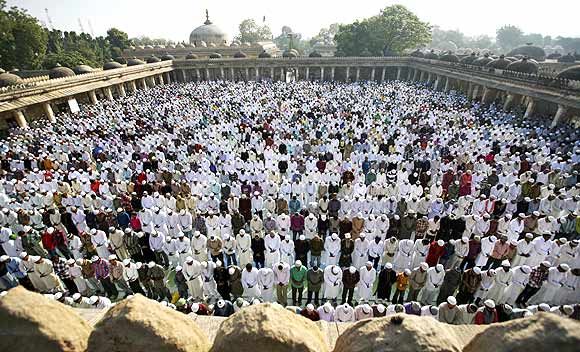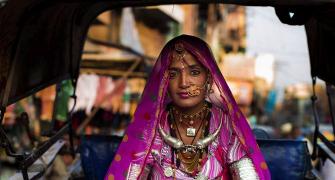The share of the young population has declined in the country since the 2001 Census.

Around 41 per cent of India's population is below the age of 20 with Muslims having the highest proportion of children and teenagers among all religions, according to just released Census 2011 data.
The share of the young population has declined in the country since the 2001 Census when it was 45 per cent for the whole country.
As many as 47 per cent of Muslims are aged below 20, the highest among all religious communities, while children and teenagers make up 40 per cent of the Hindu population, according to the 2011 data.
As per the Census data, just 29 per cent among the Jains is in the age group of 0 to 19 years while among the Christians, it is 37 per cent, Sikhs 35 per cent and Buddhists 37 per cent.
Nine per cent of India's population is above 60, leaving 50 per cent in the intervening 20 to 59 age group.
According to the 2001 Census data, 44 per cent among the Hindus were below 20 years, among Muslims 52 per cent and Jains 35 per cent.
Overall, the life cycles of different religious communities in the country have shown common trends of declining proportion of children and teenagers and increasing share of elderly citizens, the 2011 data showed.
The proportion of elderly people in the country has risen across all communities as life spans have generally increased.
Among the Muslims, just 6.4 per cent of the population is over 60, almost 50 per cent lower than the national average. Among Jains and Sikhs, the share of elderly is around 12 per cent each.
The age-wise population shares reveal another important aspect of the lives of people -- dependency.
Both children and the elderly are dependent on the able and adult population.
Overall, the young dependency ratio -- the number of children aged up to 15 years dependent on every 1,000 members of the working age population -- has declined from 621 in 2001 to 510 in 2011. This is a direct consequence of the declining number of children.
At the other end of the life spectrum, the old dependency ratio has increased from 131 in 2001 to 142 in 2011, in accordance with the growing elderly population.
Across religious communities, Muslims have the highest total dependency ratio of 748 compared to the lowest ratio for Jains which is just 498. For Hindus, the ratio is 640.










